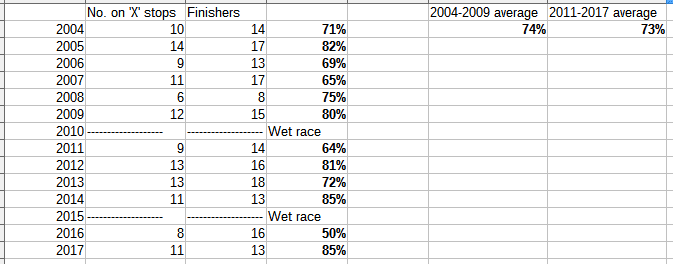I was baffled by this idea that refuelling gave us more variation in strategy - let alone "near infinite options" - so I had a quick look look at the number of pit stops that were made in past Aussie GPs, a coarse but fairly clear measure of different strategies that were playing out across the grid.
The percentage figure is the proportion of finishing drivers who did the 'popular' number of pit stops for the race - so eg. in the 2004 Aussie GP, 71% of the grid were on a 3 stop strategy.
Data source here. This isn't perfect but I imagine any errors would probably even themselves out over multiple seasons.
At risk of falling to confirmation bias it doesn't surprise me that the averages for the periods either side of refuelling are similar...........that's pretty much what I remember from the races at the time. So unless the argument is that the interest and near infinite-ness was in the few-lap windows were drivers looked to overcut........1) just no, and 2) no different to tyre strategies where drivers look to undercut. And none of this is even considering the fact that since refuelling turned races into a series of pseudo-quali runs, variations in
pace were also low, which helped contribute to the processions............
I can sort of understand why in 93/94 with the sport facing a crisis of confidence, in a bit of desperation refuelling was tried in the hope that anything different would spice things up...........each to his/her own and all that but I don't think I'll ever understand calls for its return a second time (not aiming that at either of you specifically).



